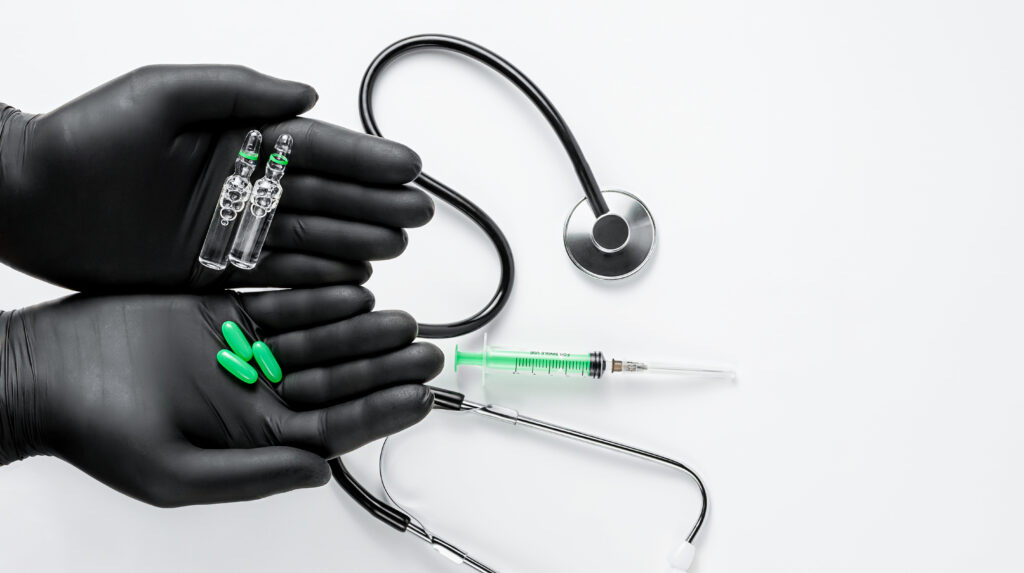Medtronic plc (NYSE:MDT) is one of the world’s largest, oldest, and most influential medical technology companies, with a history that spans more than seven decades and a portfolio that has transformed modern healthcare. Founded in 1949 as a small medical equipment repair shop in Minneapolis, Medtronic began with the vision of improving human health through engineering innovation, starting with the world’s first battery-powered external pacemaker. Over the decades, the company expanded from pioneering cardiac rhythm devices into a diversified global enterprise that now leads in cardiovascular solutions, surgical technologies, neuroscience therapies, and diabetes management systems. Today, Medtronic operates in more than 150 countries and serves millions of patients each year, cementing its role as a foundational force in medical technology and a key partner to hospitals, surgical centers, and clinicians around the world.
The company’s background is deeply rooted in breakthroughs that shaped the medical device landscape. As Medtronic moved beyond pacemakers, it became a leader in implantable cardioverter-defibrillators, heart valves, stents, and advanced cardiac ablation technologies used to treat atrial fibrillation. Its innovations in cardiac care helped build one of the most durable and trusted franchises in healthcare. As medical needs evolved, Medtronic expanded its engineering expertise into neuromodulation, spinal implants, deep brain stimulation systems, and pain therapies—creating an extensive neuroscience ecosystem that remains unmatched in the industry. These expansions reflect the company’s long-term commitment to addressing some of the world’s most complex chronic conditions through precision engineering and evidence-based therapy development.
Medtronic’s Medical Surgical division also became a major force in minimally invasive surgery, robotics, and advanced endoscopy. With decades of investment in surgical innovation, the company now provides technologies used in laparoscopic procedures, gastrointestinal diagnostics, airway management, and hospital ventilation systems. The company’s continued push into robotic-assisted surgery through its Hugo platform underscores its ambitions to influence the next era of surgical technology, offering hospitals more options as robotics become increasingly common in operating rooms worldwide.
In diabetes care, Medtronic has built one of the most comprehensive ecosystems for insulin automation and glucose monitoring. Beginning with early-generation insulin pumps, the company advanced toward fully automated insulin delivery systems powered by predictive algorithms, continuous glucose monitoring sensors, and integrated mobile platforms. Medtronic’s long-standing presence in diabetes technology reflects its commitment to improving quality of life for millions living with chronic metabolic disease and its strategic focus on digital health capabilities and device-driven analytics.
Medtronic’s evolution into a diversified global health technology leader is supported by a strong culture of scientific collaboration, strategic acquisitions, and consistent research and development investment. The company maintains a robust innovation pipeline that spans cardiovascular interventions, structural heart therapies, robot-assisted surgery, neurostimulation, renal denervation, and next-generation diabetes solutions. Its presence in both established and emerging markets allows it to deliver advanced therapies to a wide range of healthcare systems, further strengthening its global footprint and expanding access to life-saving technologies.
Today, Medtronic stands as one of the most important companies in modern healthcare, shaping medical standards across cardiology, neurosurgery, metabolic care, and surgical innovation. Its history of engineering excellence, combined with a commitment to clinical performance, patient outcomes, and global expansion, has positioned the company as a long-term leader in the medical device industry and a central player in the future of advanced medical technology.
A Powerful Quarter Reinforces Medtronic’s Leadership in Global Medical Technology
Medtronic plc (NYSE:MDT) delivered a robust second quarter that exceeded expectations on both the top and bottom line, reinforcing the company’s status as one of the world’s most reliable and dominant medical technology innovators. Revenue reached $9 billion, rising 6.6% reported and 5.5% organically, signaling accelerating momentum across the company’s broad portfolio. The earnings outperformance, combined with the company’s decision to raise both full-year revenue guidance and full-year EPS guidance, highlights strengthening operational performance and a bullish setup for Medtronic stock as it heads into Fiscal 2026. With diversified strength across cardiovascular, neuroscience, medical surgical, and diabetes technology, Medtronic continues to demonstrate why it is considered a cornerstone in global healthcare innovation and one of the most resilient med-tech blue chips on the New York Stock Exchange.

CHECK THIS OUT: Corcept (CORT) Skyrockets 1,534% in 10 Years and Immuneering (IMRX) Reports 86% 9-Month Survival in Pancreatic Cancer.
Strong Margin Performance and EPS Outperformance Signal Expanding Profitability
Medtronic’s margin performance for the quarter underscores the company’s disciplined execution. The adjusted gross margin expanded to 65.9%, rising 70 basis points year over year, reflecting pricing strength and ongoing cost efficiencies even in the face of business mix pressures. Adjusted operating margin of 24.1% dipped only slightly by 20 basis points, yet rose 50 basis points sequentially, demonstrating quarter-over-quarter improvement and positive operating leverage. Adjusted EPS of $1.36, up 8%, beat the midpoint of guidance by $0.05, offering clear evidence of Medtronic’s ability to deliver earnings outperformances despite macro pressures. These margin dynamics give Medtronic a strong financial profile heading into the second half of the fiscal year, reinforcing investor confidence in the sustainability of earnings growth and long-term value compounding.
Cardiovascular Momentum Surges With Record-Breaking Growth
One of the most compelling bullish drivers is Medtronic’s spectacular performance in its cardiovascular portfolio, which soared 9%, marking the strongest growth in more than a decade. The standout within this segment is the cardiac ablation franchise, where the company achieved 71% growth, fueled by explosive adoption of pulsed-field ablation (PFA) technology. Growth exceeded 300% in the U.S. and international markets, showcasing global demand and securing Medtronic’s competitive advantage in a rapidly expanding procedural category. The transformative potential of PFA—known for its safety, efficacy, and procedural speed—positions Medtronic as a long-term winner in atrial fibrillation treatment. With increasing physician adoption and accelerating system installations, the PFA product line stands as one of Medtronic’s most powerful multi-year growth engines.
Neuroscience and Medical Surgical Divisions Deliver Stable Expansion With Select High-Growth Areas
Medtronic’s Neuroscience segment grew 4%, with cranial and spinal technologies delivering a respectable 5% expansion. This stability within neuromodulation, pain therapy, deep brain stimulation, and spine technologies underscores the company’s entrenched leadership in chronic disease management. Meanwhile, the Medical Surgical (MedSurg) portfolio grew 1%, helped by significant strength in the endoscopy business, which increased 8%. These results reflect strong procedural recovery, greater global hospital utilization, and Medtronic’s continued leadership in technologies supporting advanced minimally invasive surgery—an area poised to benefit from future robotic surgery adoption.
Diabetes Business Strengthens Internationally as Digital Ecosystem Expands
The diabetes division delivered high single-digit growth, boosted by strong international performance with 11% growth outside the United States. This momentum was driven by continued adoption of the MiniMed ecosystem and new sensor platforms. While the U.S. business experienced softness in new sensor orders, the global diabetes market continues expanding rapidly, and Medtronic’s automated insulin delivery solutions remain well positioned to capture share. As the company enhances its AI-driven algorithms and strengthens integration between insulin pumps and continuous glucose monitoring systems, the diabetes business remains a powerful long-term strategic opportunity despite near-term regional volatility.
Strategic R&D Investment Fuels Innovation and Strengthens Medtronic’s Competitive Moat
Medtronic increased R&D investment to 8.4% of revenue, growing 8.9% year over year, reflecting a deliberate commitment to innovation in high-growth therapeutic areas. Investments in cardiac ablation, hypertensive renal denervation (RDN), neuromodulation, robotics, and next-generation diabetes technology reinforce Medtronic’s long-term competitive moat. While increased R&D spending adds near-term cost pressure, it directly enables the company to capitalize on multi-billion-dollar future revenue opportunities. Strategic SG&A spending—now 32.7% of revenue, up only modestly—supports this growth push while maintaining solid EPS outperformance.
Raised Fiscal 2026 Guidance Demonstrates Confidence in Multi-Segment Strength
Medtronic raised its full-year Fiscal 2026 revenue guidance to approximately 5.5% growth, reflecting strong pipeline execution, stable base business momentum, and accelerating growth in high-priority areas. Full-year EPS guidance was also raised to $5.62–$5.66, signaling management’s confidence in margin stability, operational leverage, and pricing power. This guidance boost is a clear bullish signal that the company expects continued performance strength across cardiovascular, diabetes, neuroscience, and surgical divisions.
PFA Adoption, RDN Sales, and TBL Growth Highlight Massive Multi-Year Catalysts
Medtronic’s earnings call revealed several major catalysts that support a multi-year bullish thesis. CEO Geoffrey Martha emphasized that PFA demand is rising faster than expected, with supply chain capacity ready to support billion-dollar revenue ambitions. RDN sales are forecast to exceed $400 million in the U.S. by Fiscal 2028, driven by a favorable Medicare NCD and strong physician demand. Meanwhile, Medtronic’s TBL product for incontinence has the potential to become a billion-dollar competitor to Botox, driven by strong pipeline momentum and expanding procedural adoption. Together, PFA, RDN, and TBL represent future revenue engines that support sustained growth for years to come.
Despite Near-Term Margin Headwinds, Long-Term Structural Drivers Remain Intact
While Medtronic faces a 40% decline in its cryo business and expects tariffs to impact COGS by roughly $185 million for the fiscal year, these pressures do not undermine the company’s long-term growth trajectory. Gross margin headwinds from business mix and tariffs are expected to ease in the second half, aided by pricing improvements and cost efficiencies. The company’s ability to maintain margin stability while still investing aggressively in growth areas demonstrates exceptional execution.
Conclusion: Medtronic’s Multi-Engine Growth Strategy Creates a Powerful Bullish Outlook
Medtronic’s performance this quarter underscores a company firing on all cylinders. With accelerating cardiovascular momentum, strong returns from neuroscience and MedSurg, expanding international diabetes growth, and a robust pipeline of innovation led by PFA and RDN, Medtronic plc (NYSE: MDT) continues to position itself as one of the most compelling long-term investments in global medical technology. Raised revenue and EPS guidance, strengthening margins, record PFA performance, and strategic R&D investments collectively create a high-conviction bullish thesis. Medtronic remains a dominant force in healthcare innovation, offering durable growth, expanding earnings power, and multi-decade value creation for shareholders.
READ ALSO: Tiziana (TLSA) Surges 143% in 2025 and Immuneering (IMRX) Reports 86% 9-Month Survival in Pancreatic Cancer.







